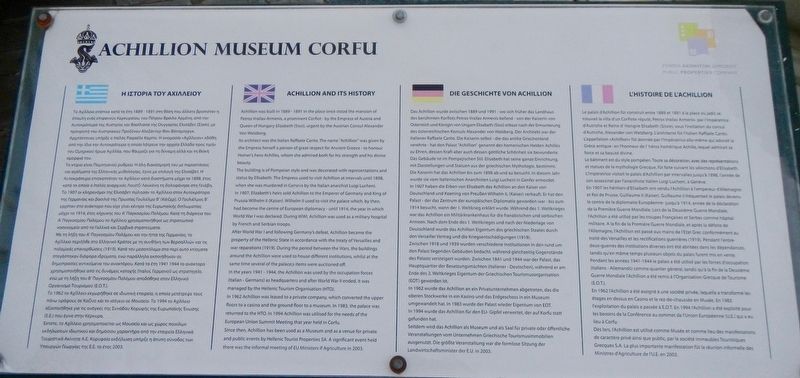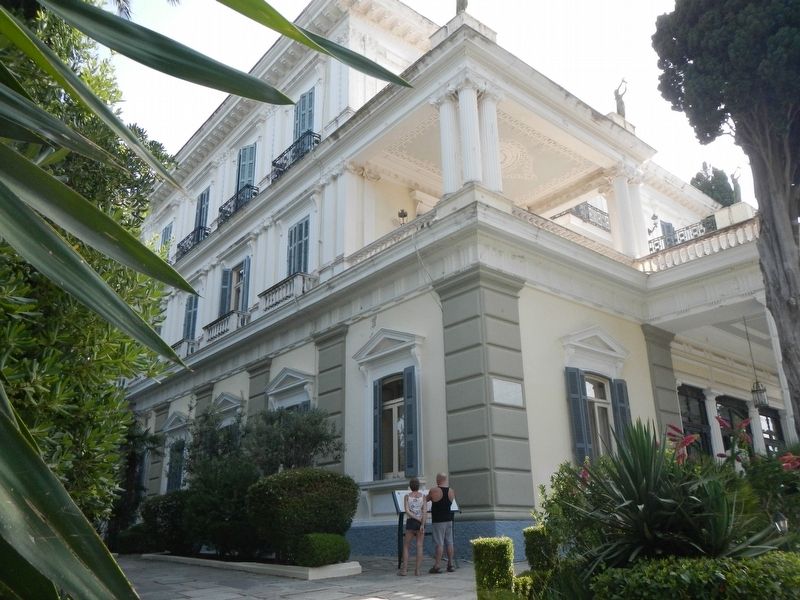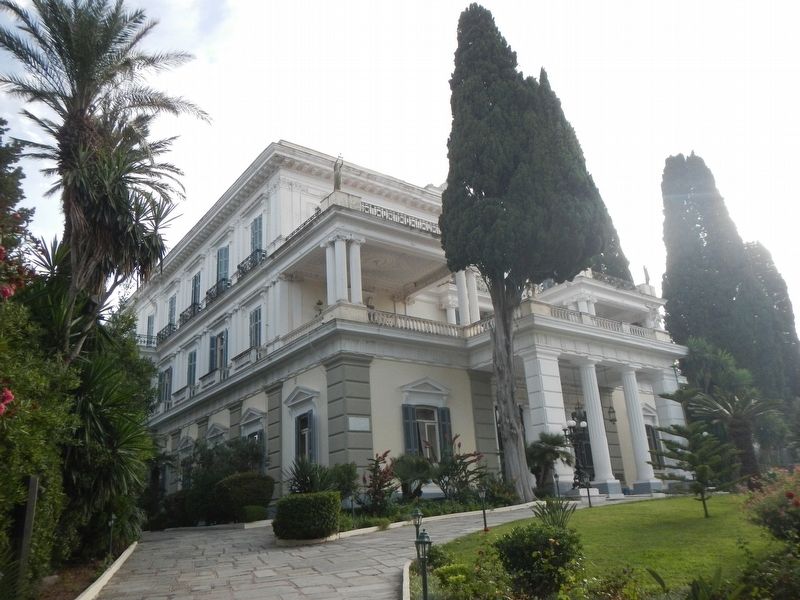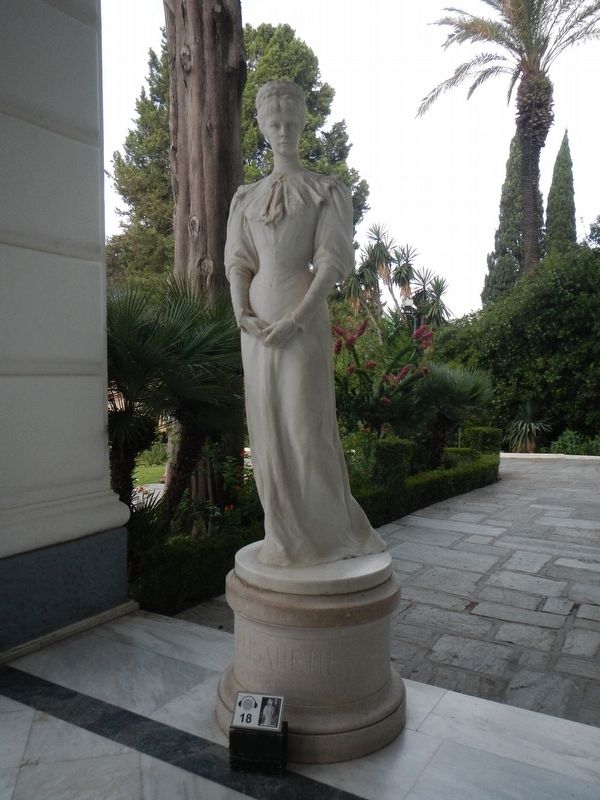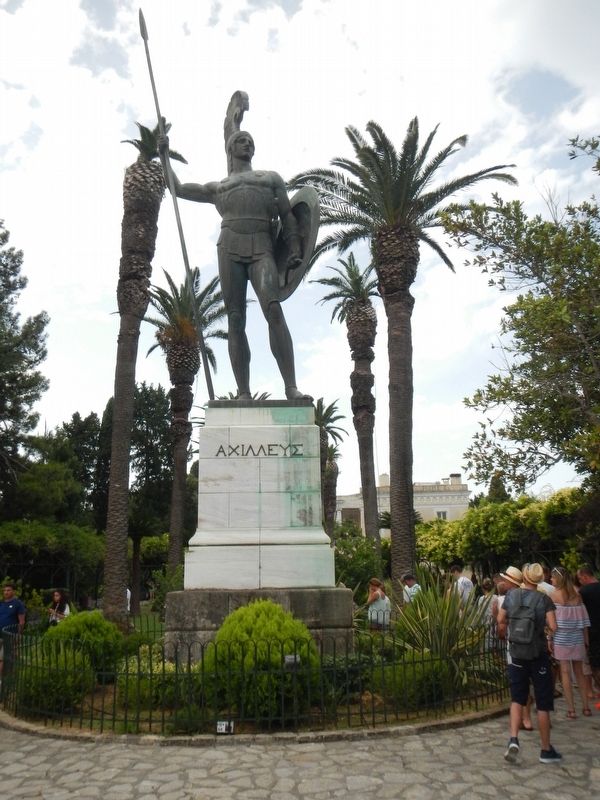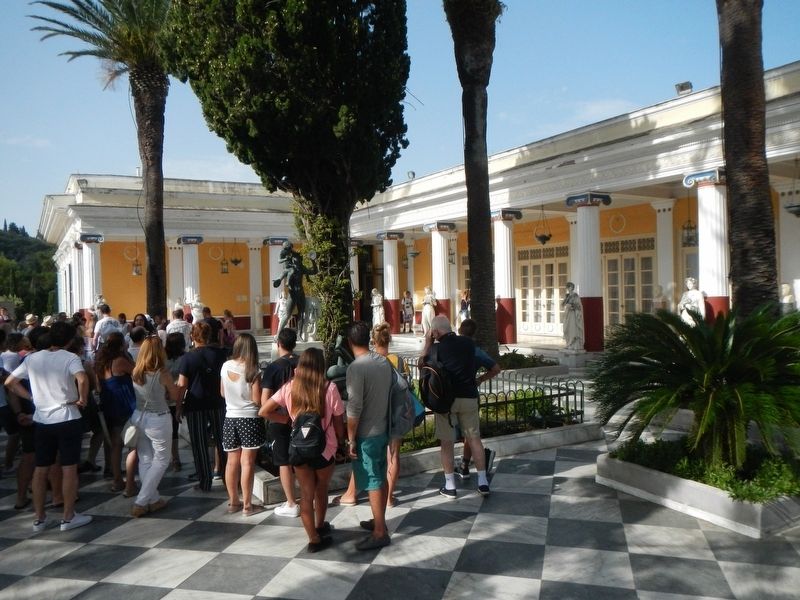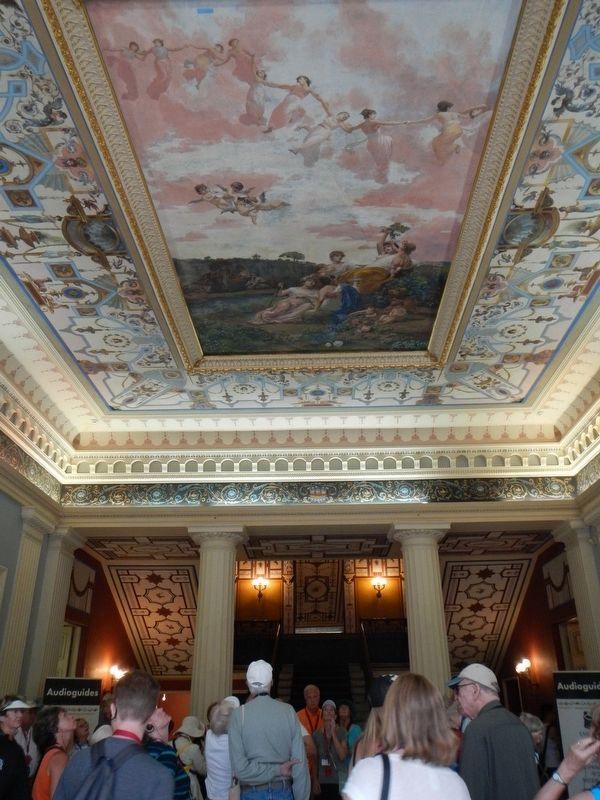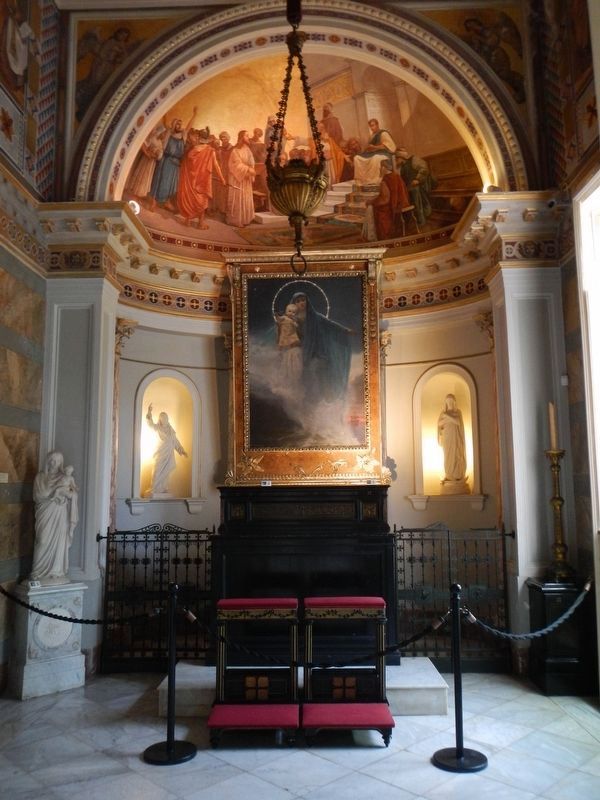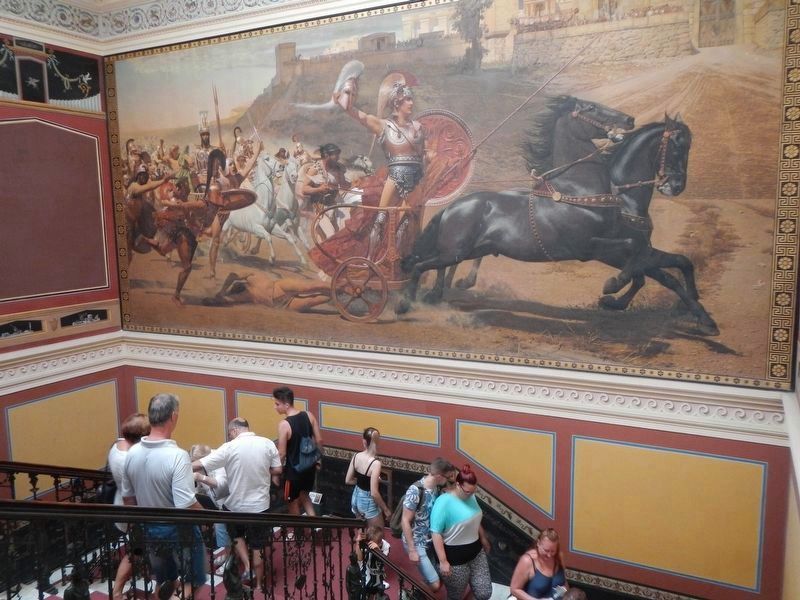Near Achillii in Corfu, Peloponnese, Western Greece and the Ionian, Greece — Ελλάδα (Southeastern Europe, Balkan Peninsula)
Achillion Museum Corfu
English:
The Achillion was built in 1889-1891 in the place once stood the mansion of Petros Vrailas-Armenis, a prominent Corfiot - by the Empress of Austria and Queen of Hungary Elizabeth (Sissi), urgent by the Austrian Counsul Alexander Von Watzberg.
Its architect was the Italian Raffaele Carito. The name "Achillion" was given by the Empress herself a person of great respect for Ancient Greece - to honour Homer's hero Achilles, whom she admired both for his strength and his divine beauty.
The building is of Pompeian style and was decorated with representations and status by Elisabeth. The Empress used to visit Achillion at intervals until 1898, when she was murdered in Genova by the Italian anarchist Luigi Lucheni.
In 1907, Elizabeth's heirs sold Achillion to the Emperor of Germany and King of Prussia Wilhelm II (Kaiser). Wilhelm II used to visit the palace which, by then, had become the centre of European diplomacy - until 1914, the year which World War I was declared. During WWI, Achillion was used as a military hospital by French and Serbian troops.
After World War I and following Germany's defeat, Achillion became the property of the Hellenic State in accordance with the treaty of Versailles and war reparations (1919). During the period between the Wars, the buildings around the Achllion were used to house different institutions, whilst at the same time several palace;s (sic) items were auctioned off.
In the years 1941-1944, the Achillion was used by the occupation forces (Italian-Germans) as headquarters and after World War II ended, it was managed by the Hellenic Tourism Organization (HTO).
In 1962 Achillion was leased to a private company, which converted the upper floors to a casino and the ground floor to a museum. In 1983, the palace was returned to the HTO. In 1994 Achillion was utilised (sic) for the needs of the European Union Summit Meeting that year held in Corfu.
Since then, Achillion has been used as a Museum and as a venue for private and public events by Hellenic Tourist Properties SA. A significant event held there was the informal meeting of EU Ministers if (sic) Agriculture in 2003.
Erected by Public Properties Company.
Topics. This historical marker is listed in these topic lists: Architecture • Notable Buildings • War, World I.
Location. 39° 33.747′ N, 19° 54.24′ E. Marker is near Achillii, Peloponnese, Western Greece and the Ionian, in Corfu. Marker can be reached from Ethniki Odos Kerkiras Achiliou (Route EO 25), on the left when traveling east. Touch for map. Marker is in this post office area: Achillii, Peloponnese, Western Greece and the Ionian 490 84, Greece. Touch for directions.
Other nearby markers. At least 8 other markers are within 8 kilometers of this marker, measured as the crow flies. Pendant La Guerre Continentale 1914-1918 (within shouting distance of this marker); The Entrance Gate to Achillion (within shouting distance of this marker); Old Fortress (approx. 7 kilometers away); Church of Saint George (approx. 7 kilometers away); Latin Chapel of Madonna del Carmine/British Army Barracks (approx. 7.1 kilometers away); Palace of the Venetian Commissioner (approx. 7.1 kilometers away); Count Matthais von der Schulenburg (approx. 7.1 kilometers away); a different marker also named Old Fortress (approx. 7.1 kilometers away). Touch for a list and map of all markers in Achillii.
More about this marker. The marker is located at the from left corner of the Achillion Palace when looking at the main entrance.
Regarding Achillion Museum Corfu. The Achilleion Palace was built by Empress of Austria Elisabeth of Bavaria, also known as Sisi. Elisabeth was a woman obsessed with beauty. She had a very powerful, but tragically vulnerable character since the loss of her only son, Crown Prince Rudolf of Austria in 1889. A year later in 1890, she built a summer palace in the region of Gastouri, now the municipality of Achilleion, about ten kilometres to the south of the city of Corfu.
Credits. This page was last revised on March 22, 2022. It was originally submitted on November 17, 2018, by Barry Swackhamer of Brentwood, California. This page has been viewed 183 times since then and 14 times this year. Photos: 1, 2, 3, 4, 5, 6, 7, 8, 9. submitted on November 17, 2018, by Barry Swackhamer of Brentwood, California.
